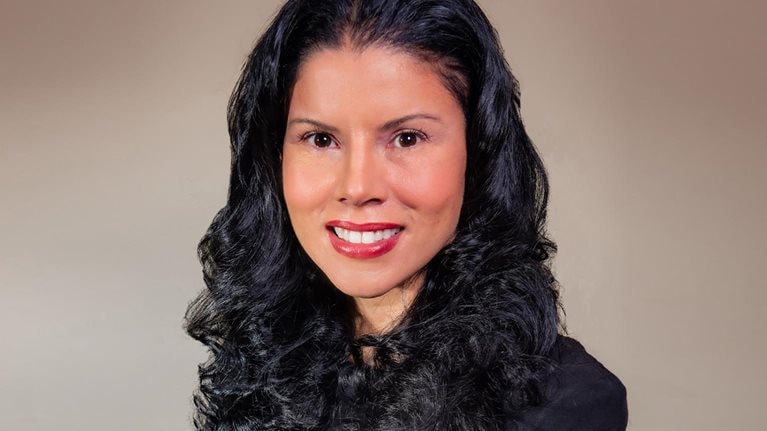It’s a critical role at a critical time. Positions dedicated to diversity, equity, and inclusion (DE&I) have quadrupled in the past five years in the United States, and no DE&I role is more visible than the chief diversity officer (CDO). The rate of new CDO hires in 2021 was nearly triple the rate of hires in the previous 16 months.1 In fact, among Fortune 500 companies, 53 percent now have a CDO or equivalent role2 and more than 60 have since May 2020 appointed their first-ever diversity leader.3
Today, amid economic uncertainty, heightened social tensions, and the ongoing competition for talent, the CDO role has arguably never been more important. The last US recession was devastating for Hispanic and Black households, which between 2005 and 2009 lost on average more than three times the wealth of White households.4 CDOs can be at the forefront in positioning organizations to cushion any downturn for similarly vulnerable employees, knowing that companies that have more diverse workforces on average financially outperform those that don’t.5
So why are so many CDOs struggling?
Among CDOs and their equivalents holding the position in 2018, 60 percent have left the role.6 In fact, while it’s a relatively new role, it’s already the C-suite seat with the shortest tenure. The CDO position may have been created with the best of intentions, but many organizations don’t seem to know quite what it is. The scope and nature of the position are often poorly defined, with ambiguity about everything from its purpose to its authority and even seniority within the organization.
This is unfortunate for any C-suite role. But the CDO position carries additional risks for organizations that fail to get the role right. Employees and customers alike pay keen attention to how companies follow through on promises related to DE&I, especially the extent to which they reinforce public declarations with actions. For example, organizations that are inconsistent in their support of issues such as LGBTQ rights have been publicly called out for trying to leverage DE&I for marketing purposes.
High-potential leaders should aspire to the CDO role, both for the impact DE&I efforts can have on a company’s performance and for their potential to address inequities and drive positive societal change. Ensuring the position flourishes rather than flounders—and that CDOs help organizations successfully navigate the current climate—requires that companies reassess how they approach the role to ensure their best and brightest employees are set up for success and experience a positive impact on their career trajectory.
An evolution, not a revolution
The conversation on issues of DE&I is global, with examples ranging from the Indian Supreme Court’s 2017 declaration that freedom of sexual orientation is a fundamental right to efforts across Asian countries for greater gender parity and German initiatives to increase representation of women in the technology sector beyond their current 15 percent of data analytics roles.7 The definition of DE&I—and the important areas of focus—may vary across communities in different regions, but the benefits associated with the steady expansion of individual freedom transcend any border.
In the United States, the murder of George Floyd saw a paradigm shift in societal expectations for corporations to support the work of racial justice and play an active role in addressing inequities affecting employees from underrepresented groups. The meteoric rise of DE&I-related roles was a direct result as organizations established new teams and positions to support DE&I efforts.
But DE&I’s importance and influence within corporations had been steadily evolving for years as its connection to both financial and talent outcomes has become clearer. Our research showed organizations with more female senior leaders outperformed their peers, for example, providing a critical edge in emerging successfully from the Great Recession of 2008.8 We’ve also found employees are 47 percent more likely to stay with an organization that’s inclusive,9 and 39 percent of job seekers are more likely to turn down a job opportunity if they perceive a lack of inclusion.10
In short, DE&I has evolved from a legal requirement to a critical business driver (Exhibit 1). In 2002, for instance, just 5 percent of US private enterprises had nondiscrimination policies based on gender identity; by 2010, 72 percent did.11 Between 2015 and 2020, the number of DE&I-related roles increased by 71 percent12; following the murder of George Floyd in May 2020, DE&I job postings jumped 123 percent in the next three months alone.13 And this growth mirrored broader societal shifts: the number of married same-sex households increased by almost 70 percent from 2014 to 2019, for example.14

The rise of the CDO
The emergence of the CDO role—and its senior-leadership equivalents such as head of diversity and director of diversity—resulted primarily from two factors, one external and one internal. The external push came from rapid shifts in societal expectations about equality and social justice, which put a spotlight on the extent to which companies should or could play a positive role in fostering societal advancement by reflecting the views of their employees.
The internal factor stemmed more specifically from the growing realization that diversity is a source of competitive advantage. As we revealed in 2020, companies in the top quartile for gender diversity in executive teams were 25 percent more likely to have above-average profitability than companies in the fourth quartile. And in the case of ethnic and cultural diversity, top-quartile companies in profitability outperformed those in the fourth quartile by 36 percent.15
In the past few years, hard metrics such as these have further underlined the growing consensus that a focus on DE&I issues is critical to an organization’s ability to grow, innovate, and compete for talent. And it has demanded the expansion of roles to drive those efforts, resulting in the dramatic rise in DE&I-related positions and the creation of the CDO role to oversee it all (Exhibit 2).

The challenges holding back CDOs
On paper, the CDO role is a dream for a high-potential leader: it’s visible and critical to an organization’s operations and reputation and has the opportunity to drive meaningful change for employees and society (see sidebar, “Driving change through influence”). Yet we find three distinct challenges holding CDOs back.
First, there is still ambiguity about what the role should entail, and organizations don’t always establish clear expectations and scope. This uncertainty partly explains why the average tenure of a CDO was just 1.8 years as of 2019,16 compared with an average of 4.9 years for all C-suite roles.17
Second, this failure to clearly define the role can also significantly alter the trajectory of a leader’s career. Of the more than half of CDOs in 2018 who have since left their roles, a majority left the CDO track entirely. This is forcing organizations to increasingly seek candidates without relevant experience, something that would never be considered for other C-suite roles. One report noted that just 18 percent of CDOs in 2021 had previous diversity experience, down from 26 percent in 2018.18
Third, the DE&I function is still often regarded as “nice to have” rather than a strategic imperative critical to achieving key talent and performance outcomes. As a result, CDOs often operate with limited organizational resources and support, severely curtailing their potential impact. For example, just 35 percent of CDOs say they have the employee demographic data they need to make meaningful decisions about diverse representation and build an equitable, inclusive culture. This indicates that most CDOs struggle to navigate existing organizational hierarchies and structures to be successful, with the challenge compounded by the fact that many organizations still don’t have a clear talent profile for an effective CDO.
Setting up CDOs for success
Setting CDOs up for success requires getting several elements right. At the most basic level, organizations should ask critical questions across three dimensions before anyone is appointed:
- What’s the exact mission and scope of the role, and how will its impact be measured?
- Where will the role sit within the organizational structure to best position it to succeed?
- What’s the right talent profile for the role in terms of knowledge, skills, attributes, and experience?
Specifying the CDO’s mission and scope
Our research indicates the CDO’s mission and scope can be summarized in three focus areas, which may vary based on an organization’s DE&I strategy and context (Exhibit 3).

Ultimately, the scope and mission of the CDO role should be informed by the organization’s broader DE&I strategy. That’s easier said than done because companies have a plethora of areas they can focus on.
Internally, for example, they can drive DE&I impact and improve the organization by creating a diversity of identities, building an inclusive environment, and providing equitable access to opportunities and benefits. Externally, companies can focus on improving communities and societies through corporate and social-responsibility efforts, explicitly designing operations and investment processes to improve DE&I outcomes, and embedding equity considerations through their core business and strategy. As part of the Chefsache initiative in Germany to increase gender parity in employment, organizations have taken action both internally and externally.19 Internally, one organization launched an initiative to support women in families, including advertising jobs as both full-time and part-time, establishing parent–child offices so employees can bring their children to work, and founding a community for support and sharing. Externally, another organization launched a grant aimed at training and mentoring women to take on data analytics roles. The training is part-time and digital by design to give women flexibility in integrating it into their daily routines.
Organizations don’t need to try to do it all. What’s important is that the scope of the CDO role mirrors the specific aspirations of the organization’s DE&I strategy.
Finding the CDO’s place within the organizational structure
Achieving DE&I impact and progress requires careful consideration of where the CDO role is situated within the broader organizational structure. There are two critical aspects to keep in mind: where in the organization the CDO would be best positioned for impact, and how the CDO should be expected to work with stakeholders and be held accountable for impact.
Globally, we find CDOs tend to sit two levels below the CEO, often reporting to the chief human resources officer. In the United States, however, CDOs typically report directly to the CEO, although in some instances they report to COOs (Exhibit 4).

Regardless of hierarchy, industry, or region, DE&I is the main responsibility of the CDO, although companies are increasingly building equity into their DE&I efforts, which has implications for who CDOs work with and what they are held accountable for. A CDO typically works closely with the CEO and other members of the executive leadership team to set a DE&I vision and get support for proposed initiatives.
The CDO then translates the vision and implements the initiatives in concert with business and functional leaders as well as with DE&I-specific and HR colleagues. Global Fortune 100 and US Fortune 400 companies most often address DE&I topics within broader committees such as HR and sustainability, although some may opt to establish DE&I councils—groups of cross-functional decision makers—to drive goals and initiatives.
Ultimately, while the CDO role’s location within the organizational structure is important from a perception standpoint, it’s less important than the degree to which the person in the role is empowered to work with and through stakeholders in the business to drive progress. CDOs’ areas of focus should also inform where they sit. For example, CDOs with a primarily external focus may be best positioned to work most closely with an environment, social, and governance (ESG) function.
Defining the right talent profile
What does a truly effective CDO look like? And how might a CDO’s talent profile shift depend on the intended focus of the role? Getting this right is especially important given that a lack of clear expectations and fit regarding knowledge, skills, attributes, and experience (KSAE) may be contributing to relatively high turnover for CDOs.
As the CDO role has become more mature, organizations have increasingly relied on prior experience as a proxy for potential—even though only 18 percent of current CDOs previously worked in the same role at another company. We believe the KSAE that best positions a potential CDO for success extends far beyond prior experience and may shift depending on the intended focus areas of the role.
CDOs with both internal and external remits need a diverse set of KSAEs to be successful. They should understand DE&I, of course, but also how to manage programs and drive change. In this vein, they should be able to develop and set a strategy, build credibility with various sets of stakeholders, and ultimately influence and build commitment for diversity goals.
Organizational development and learning and development are important skills, but only 33 percent of CDOs at Standard & Poor’s 500 companies have experience in these areas.20 Additionally, CDOs should be strong problem solvers with excellent communication skills. And while organizations hold diversity leadership experience in high regard, any progressive leadership experience exemplifying the ability to drive cross-functional teams and change at scale could be sufficient if coupled with other KSAE indicators.
What does this mean? If talent disruption is a focus of the CDO role, the search should prioritize experience in project management with extensive knowledge of talent processes. If business integration is the focus, prior experience driving business objectives would help the CDO align other initiatives (such as social impact) with DE&I-related initiatives. In short, skills should align with the role’s focus (Exhibit 5).

It’s self-evident that employees should bring skills and experiences that directly pertain to their job. But the CDO role is not a narrow, discrete position: it can span internal and external priorities and requires collaboration across business functions and geographies. To set up CDOs for success, organizations need to link the role to a clear and intentional strategy, give it a clear mandate with real authority, and source talent directly linked to the role’s focus areas. Through thoughtful planning and execution, companies can ensure the CDO role fulfills its promise.


